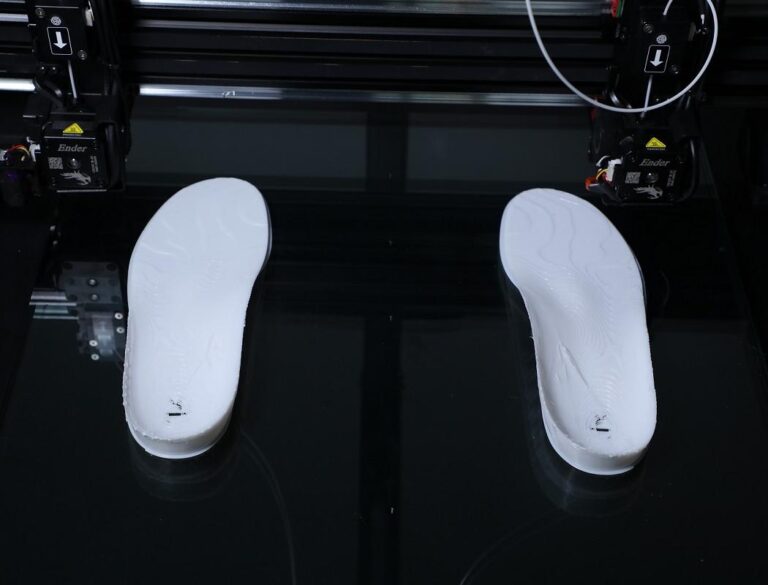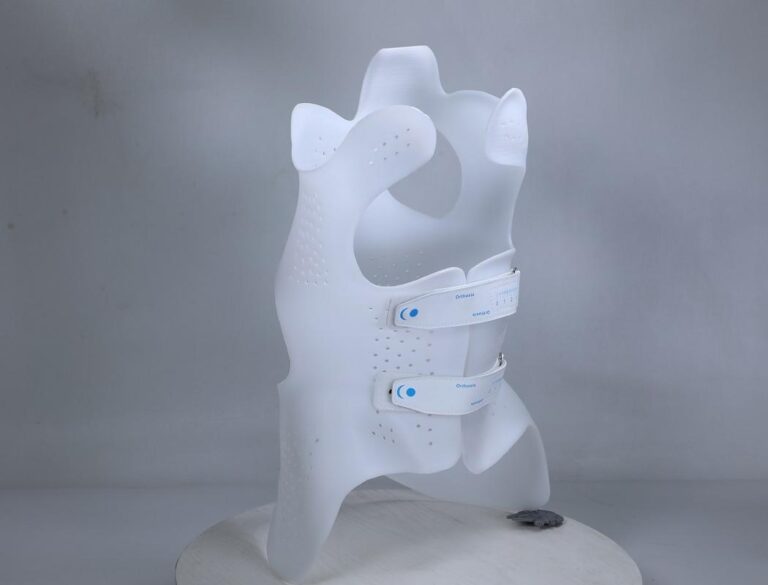The Paris 2024 Olympics are set to showcase not only athletic excellence but also cutting-edge technological advancements, including the innovative use of 3D printing. From creating the world’s first 3D printed skatepark to pioneering infrastructure projects, 3D printing is playing an unexpected yet pivotal role in shaping the future of the Games. In this blog, we explore three groundbreaking applications of 3D printing at the Paris 2024 Olympics, highlighting how this technology is pushing the boundaries of design, construction, and transportation.
3D Printed Skatepark at Paris 2024 Olympics
One of the most exciting developments for the Paris 2024 Olympics is the introduction of the world’s first 3D printed skatepark. This remarkable structure, created by the construction company Saint-Gobain, exemplifies the versatility and potential of 3D printing. Located at Esplanade de Paris La Défense, the 400m² skatepark opened on July 18th and is designed to embody the inclusive spirit of the Games.
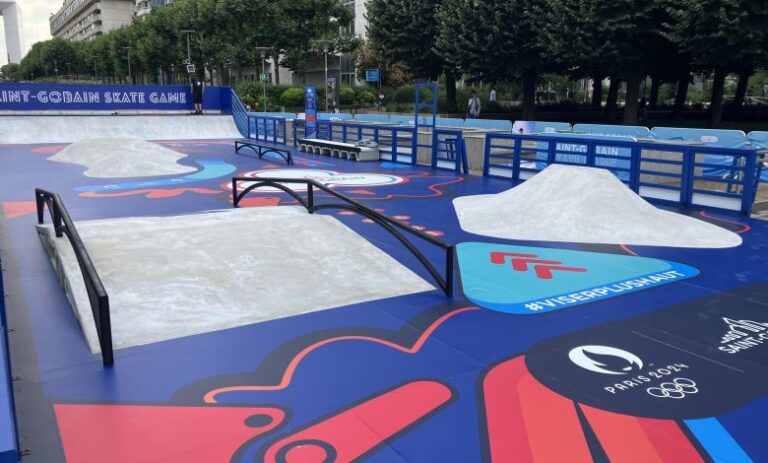
(Image Credit: Saint-Gobain Weber Beamix)
The skatepark was constructed using large-format 3D printing technology, which allowed for the precise manufacturing of eight concrete modules. These include two launchers, an A-Frame, a volcano, a double volcano, and three benches, all of which were custom-designed and printed at Saint-Gobain Weber Beamix’s facility in Eindhoven. The project involved collaboration with various artists, construction experts, and skateboarder Vincent Matheron to ensure that the park meets the needs of skaters of all skill levels.
Peter Paul Cornelissen, Weber Beamix’s 3D Business Unit Manager, emphasized the benefits of using 3D printing in this project, such as reducing the environmental footprint, enhancing creativity, speeding up production times, and allowing for greater design freedom. The skatepark’s design also includes features for wheelchair users, developed with input from the non-profit organization Pratikable, making it a truly inclusive space.
3D Printed Footbridge at Paris 2024 Olympics
In addition to the skatepark, the Paris 2024 Olympics will feature another groundbreaking structure: a 3D printed pedestrian footbridge. Commissioned by France’s Plaine Commune Grand Paris and designed by XtreeE, this 40-meter bridge is set to become a landmark in architectural innovation and sustainable construction.
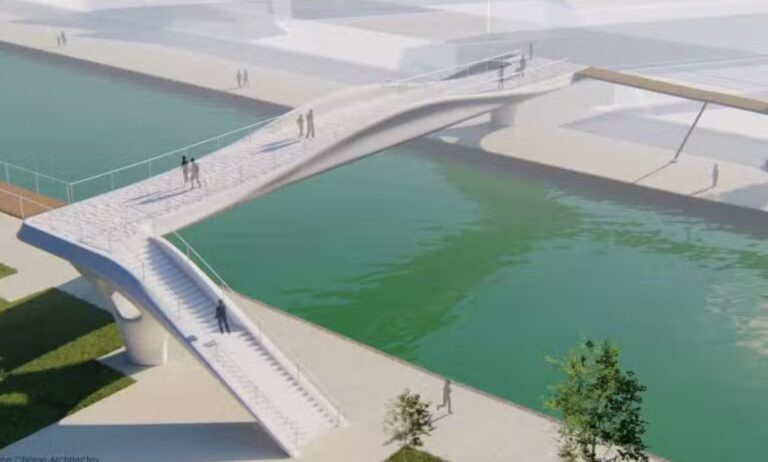
(Image Credit: XTreeE)
This footbridge will be the first in Paris to utilize a fully 3D printed concrete load-bearing architecture, demonstrating the potential of 3D printing to revolutionize urban landscapes. By integrating cutting-edge technology with sophisticated design, the bridge represents a significant shift towards Industry 4.0, where digital precision and eco-friendly materials take center stage.
XtreeE’s approach to the project underscores the environmental advantages of 3D printing. The technology allows for a 60% reduction in concrete usage compared to traditional construction methods, thereby minimizing waste and lowering the carbon footprint. Components for the bridge are manufactured in controlled settings and then quickly assembled on-site, which enhances efficiency and further reduces environmental impact.
This initiative is part of a broader trend in urban development where additive manufacturing is increasingly being adopted. Cities like Amsterdam, with its first 3D printed bridge, and Dubai, which aims to 3D print 25% of its buildings by 2030, are leading the way. The use of 3D printing in these projects offers design flexibility, reduced material usage, and significant cost savings, making it an attractive option for sustainable architecture.
3D-Printed Autonomous Ferry
Another innovative use of 3D printing for the Paris 2024 Olympics is the development of a 3D-printed autonomous ferry. This self-driving, electric watercraft, created by the collective Roboat, Holland Shipyards Group, and Sequana Développement, is designed to transport athletes and visitors to and from the Olympic venues in an environmentally friendly manner.
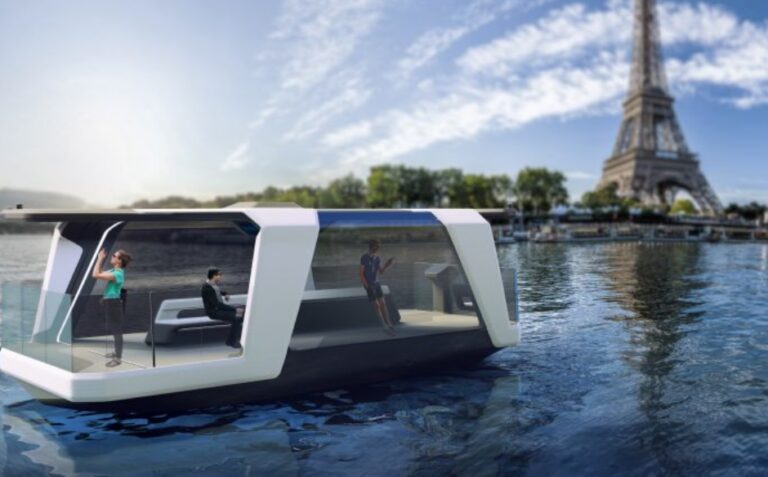
(Image Credit: Roboat)
The ferry, which may be the largest 3D-printed autonomous ferry ever created, measures 9 by 3.90 meters and features a 3D-printed hull made from recycled materials. The ferry’s autonomous capabilities, combined with its electric propulsion system, make it a sustainable transportation option for the Games.
The consortium behind the ferry envisions it as a key part of the transportation network for the Paris 2024 Olympics. The ferry’s design allows it to automatically dock, moor, and charge wirelessly, eliminating the need for manual intervention. This technology leverages advancements in artificial intelligence and autonomous systems, positioning the ferry as a forward-thinking solution for urban mobility.
This project aligns with the broader goals of the Paris 2024 Olympics to promote sustainability and innovation. By incorporating 3D printing into the construction of the ferry, the collective not only showcases the potential of additive manufacturing in the maritime sector but also highlights the importance of environmentally responsible solutions in large-scale events.
Large Scale 3D Printer Recommendations
To achieve these ambitious projects, large scale 3D printers are essential. Here are two top recommendations for large-format 3D printing:
G12 Pellet 3D Printer
- Printing Size: 1200×1000×1000mm
- Features:
- Large-scale pellet extrusion
- Nozzle temperature up to 450℃
- Rapid heating of the hot bed up to 120℃
- High Flow Screw Extrusion
- Powerful Servo Motor
The G12 Pellet 3D Printer is a robust, large-format printer capable of producing medium-to-large parts with high precision. Its versatility and performance make it ideal for projects like the 3D printed skatepark and other large-scale constructions.
G40 Pellet 3D Printer
- Printing Size: 3725×2500×1330mm
- Features:
- Large working space
- Workbench design
- CNC five-axis head
- High flow screw extrusion design
The G40 Pellet 3D Printer, PioCreat’s largest industrial printer, is a versatile machine that integrates CNC five-axis manufacturing, making it suitable for complex, large-scale projects such as the 3D printed footbridge. Its capability to handle large volumes and intricate designs makes it a top choice for ambitious architectural and industrial applications.
Wrapping Up
The Paris 2024 Olympics are not just a showcase of athletic prowess but also a platform for technological innovation. The unexpected uses of 3D printing at the Games, from creating a world-first 3D printed skatepark to a revolutionary pedestrian footbridge and a sustainable autonomous ferry, highlight the transformative potential of this technology. As 3D printing continues to evolve, its applications in large-scale projects like these will undoubtedly expand, offering new opportunities for sustainable and innovative construction.

